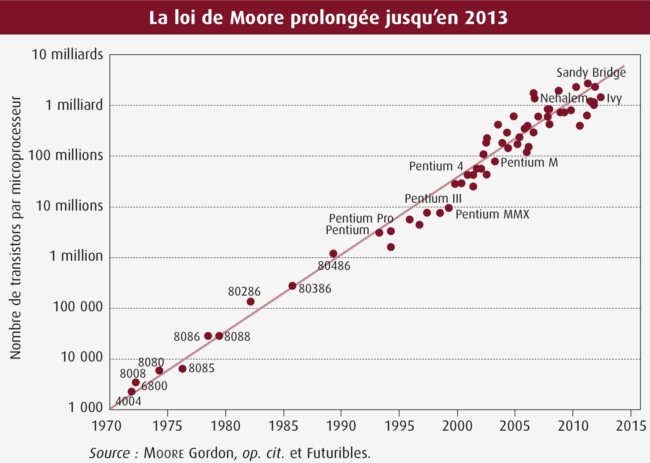In an article published in the journal Electronics in 1965, Gordon E. Moore, then Research and Development Director at Fairchild Semiconductor (a semi-conductor manufacturer of which he was a cofounder), pondered the future of integrated circuits, which had been invented in 1958 by the American Jack Kilby (he would receive the Nobel prize for physics in 2000). In 1965, these circuits were made up of several components (transistors, resistors, condensers etc.) integrated on a single wafer and performing more than one function (today they are called micro-chips). In his article, Moore estimated that the dimensions of these circuits would continue to reduce and that it would be possible to double the number of components on a circuit every two years, thus making it possible to increase its performance and, in particular, its operating speed. This is the famous Moore’s Law. He contended that these circuits would pave the way for new machines (from portable computers to electronic watches) and improve the performance of systems like radar.
His article was genuinely far-sighted, since these predictions actually came to pass. He also speculated on the extreme limits to the miniaturization of circuits, having understood that at a very small scale it would be increasingly difficult to cope with the problem of heat (which is given off by the Joule effect when an electrical current meets resistance). Moore was to reconsider the terms of his law – the biennial doubling of the performance of circuits – on several occasions. At one point he envisaged the possibility they might double in performance every 18 months, but in 1975 he confirmed the original two-year hypothesis formulated in his 1965 article.




